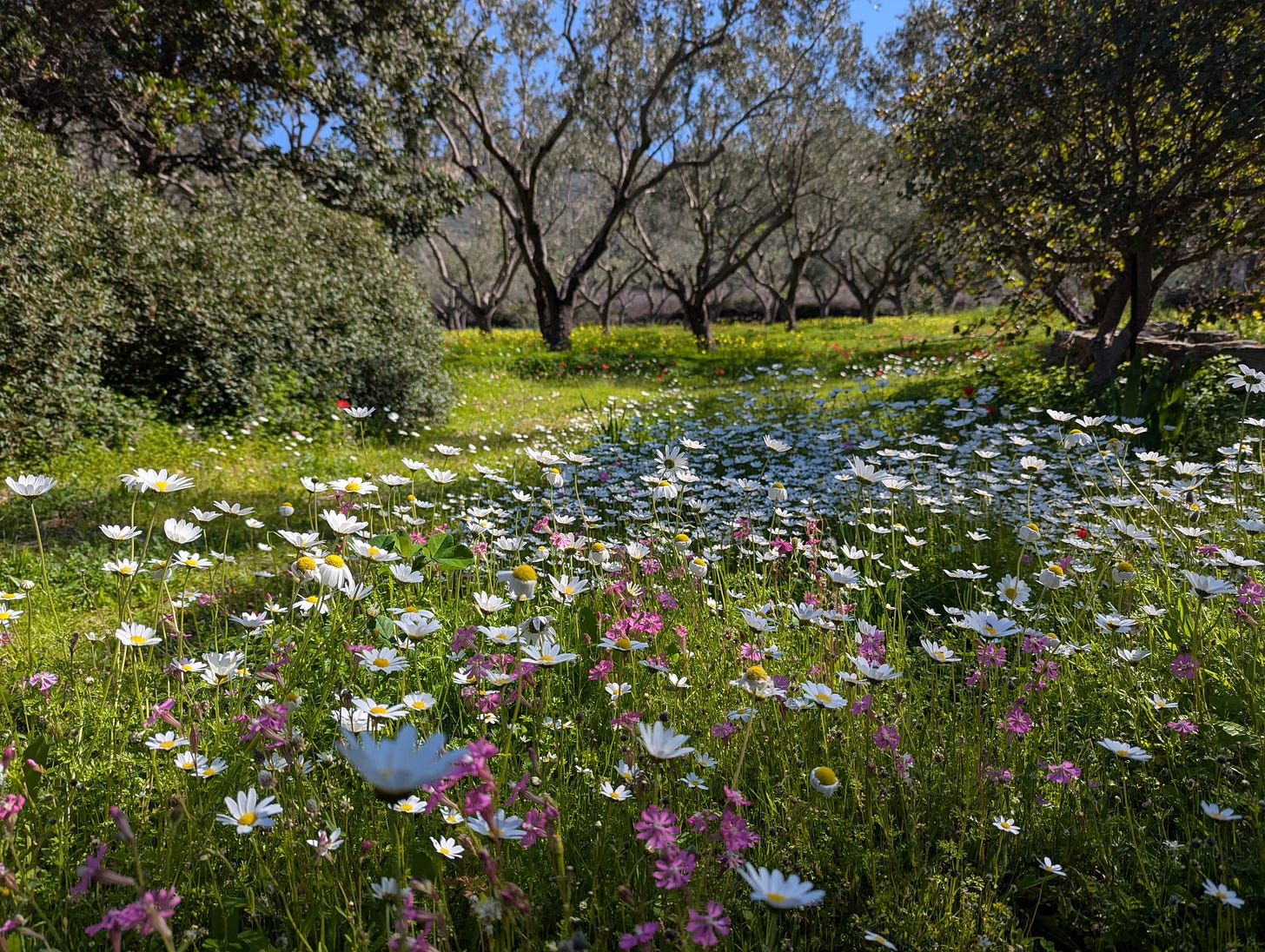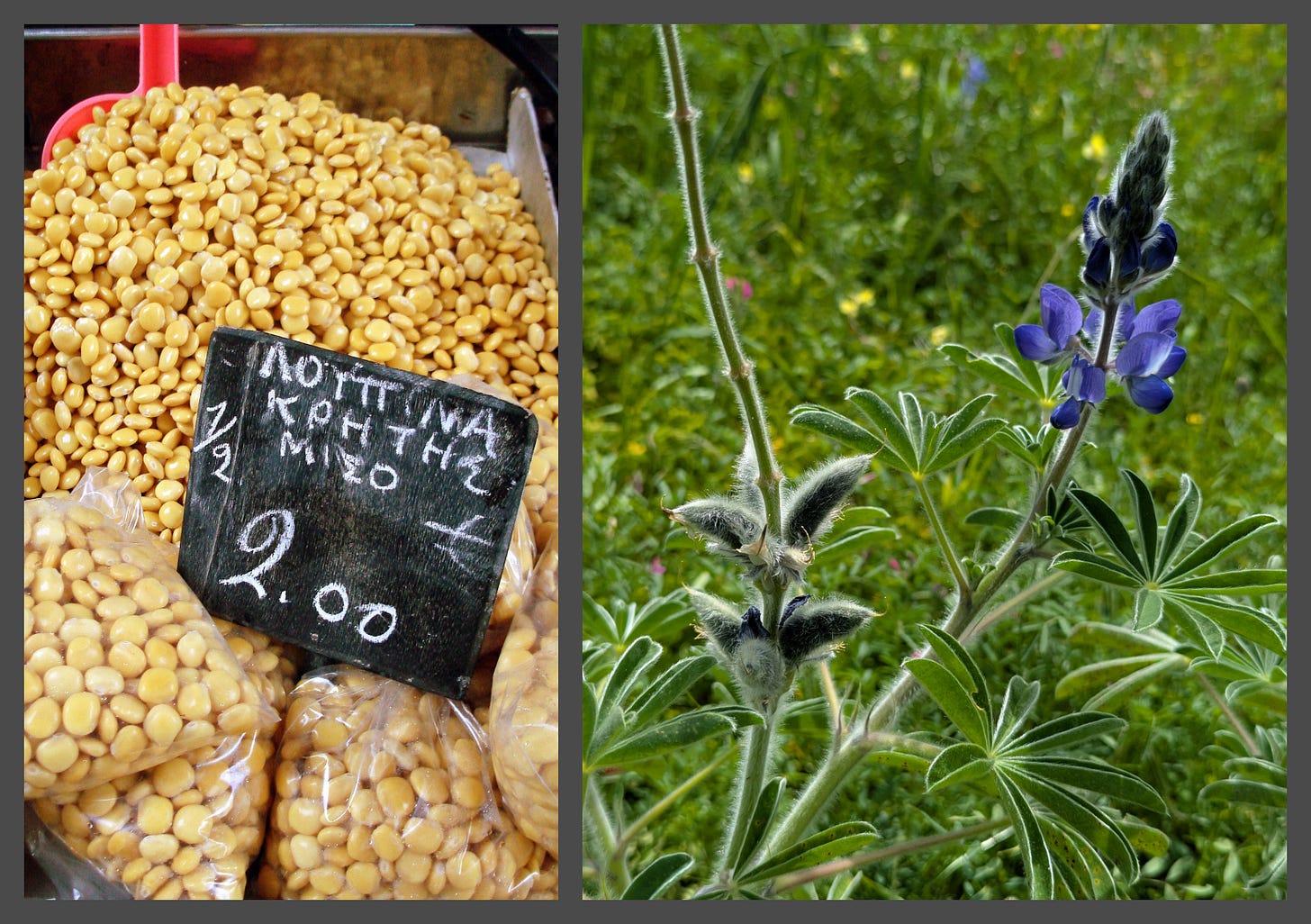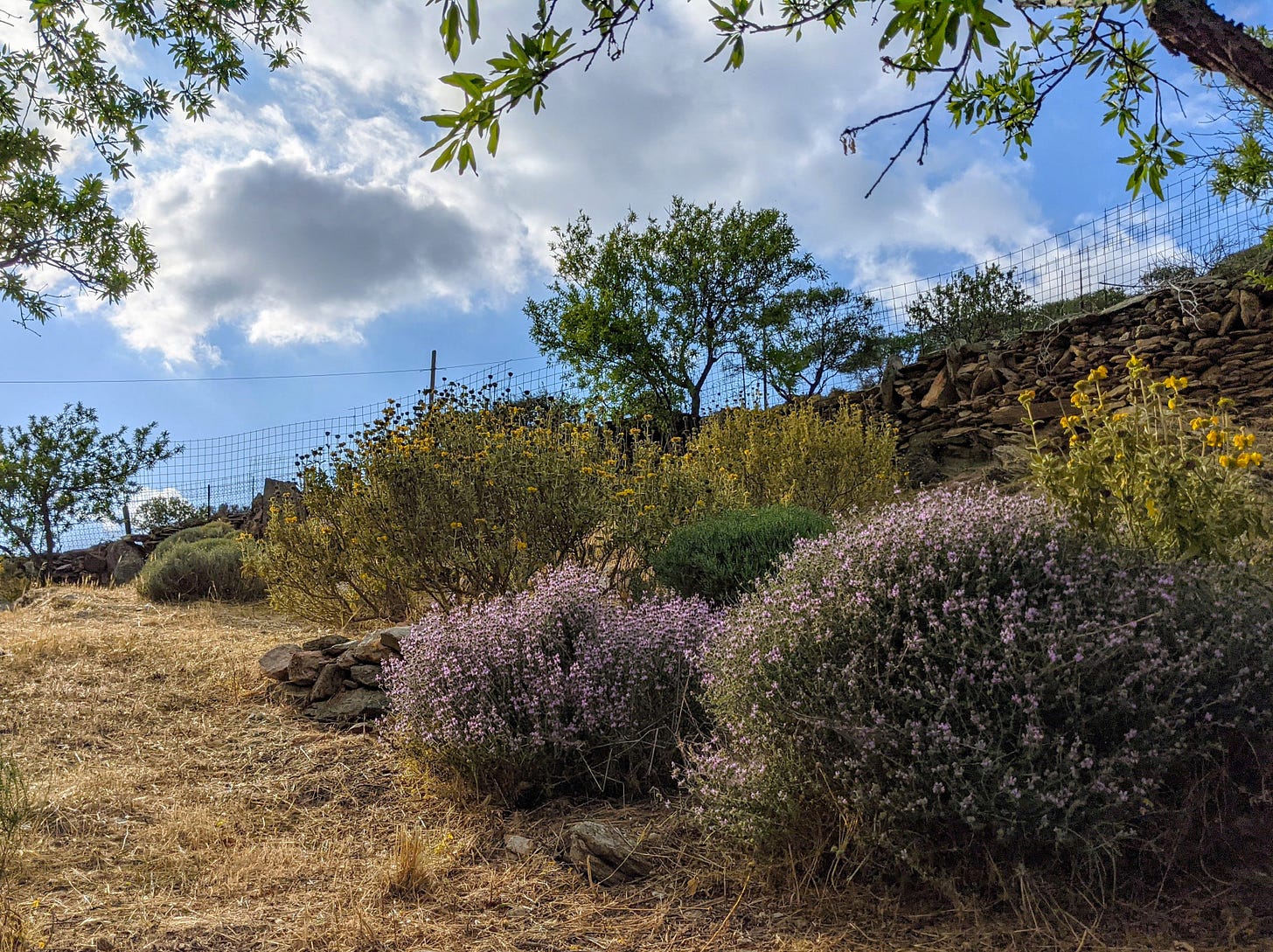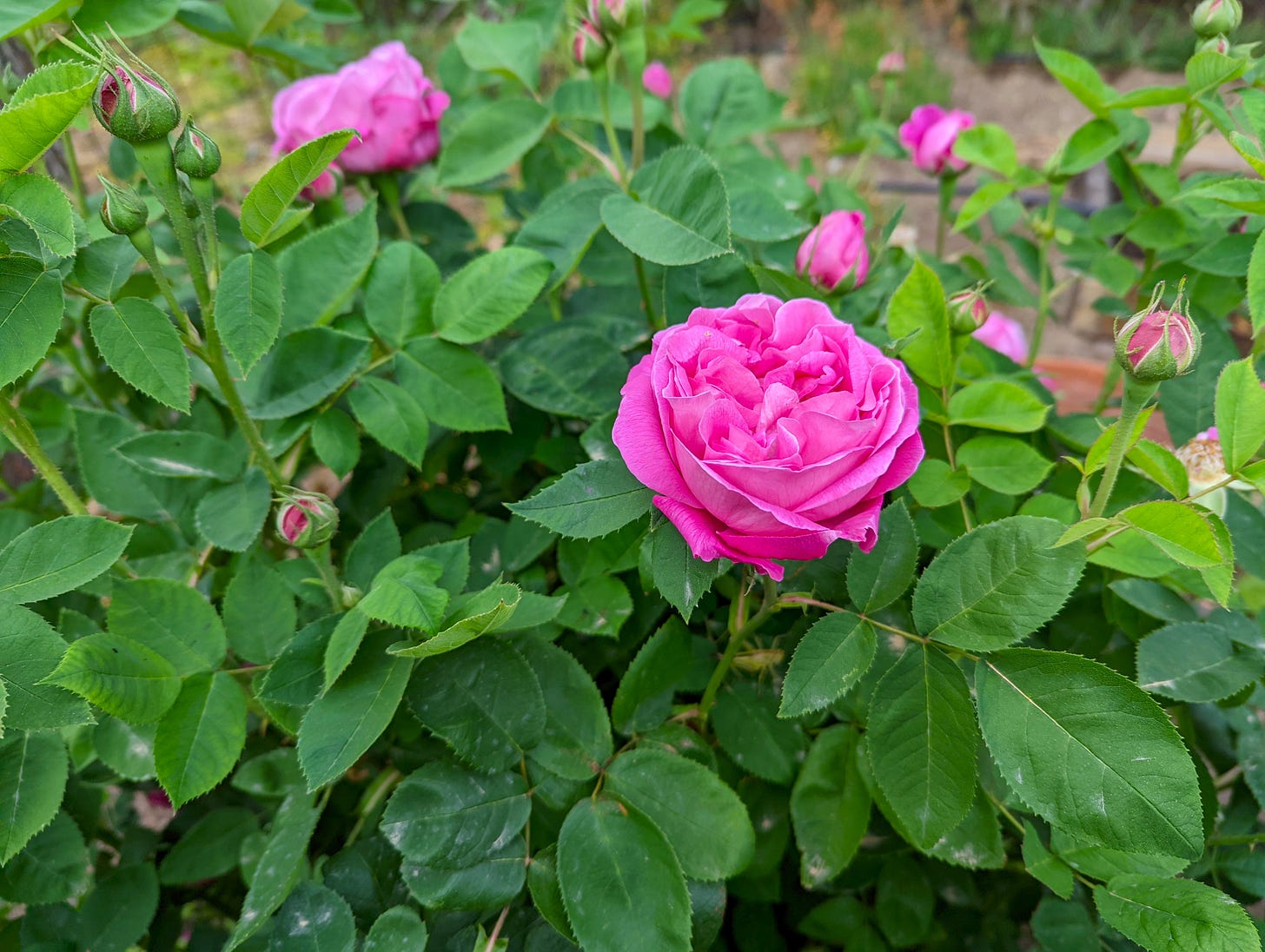Wild Kéa Spring, and Fashionable Gardens
As we enjoy the carpet of multicolored flowers under our olive trees, Costas shares his thoughts about the somewhat 'unnatural' landscape of some vacationers' gardens
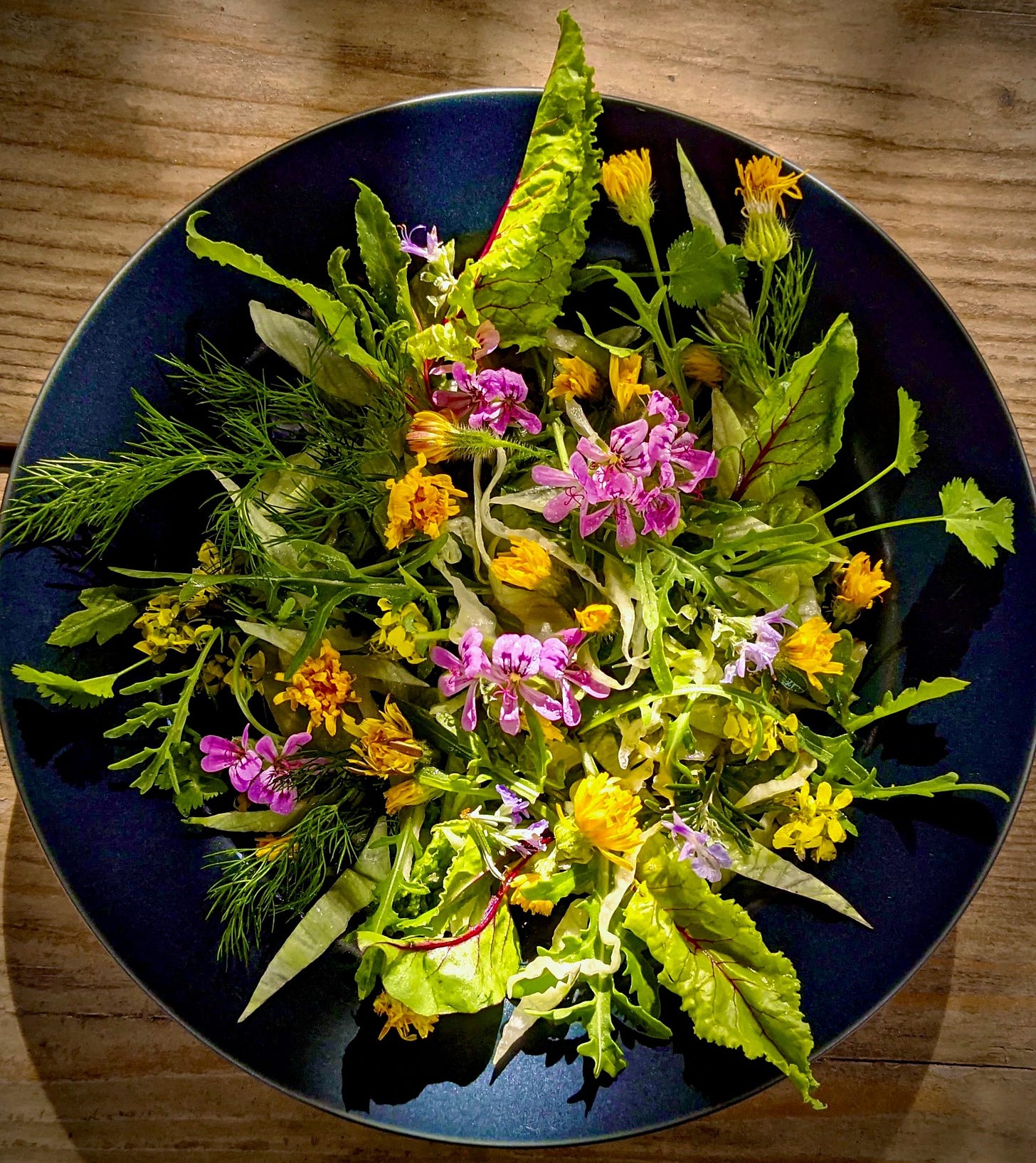

Fashionable plants
In Greece, and probably elsewhere, you can date gardens by their plants. Every other year, new plants show up at the nurseries, and suddenly you see these same plants in all gardens, as gradually some others disappear. Fashion has entered the garden for good, and now plants along with humans circle the world.
I remember when we first got on Kéa it was the year of the Australian Callistemon, the so-called bottlebrush —I never understood the beauty of a bright red ‘bottlebrush’… Now we are living in the glorious era of the American Stipa, a plant that has not decided whether it is a bush or just grass.
The sixties was the time of the Araucaria, and you still see them on the island, trying hard to imitate the glorious Christmas tree —the latter usually mark the homes of local Kéans, apparently a sign of prosperity and upward mobility. And until a few years ago, everyone was fencing their gardens within the green walls of the Myoporum, a bush from the Pacific that replaced its predecessor the Leyland cypress, and just thrives everywhere, impervious of anything around it.
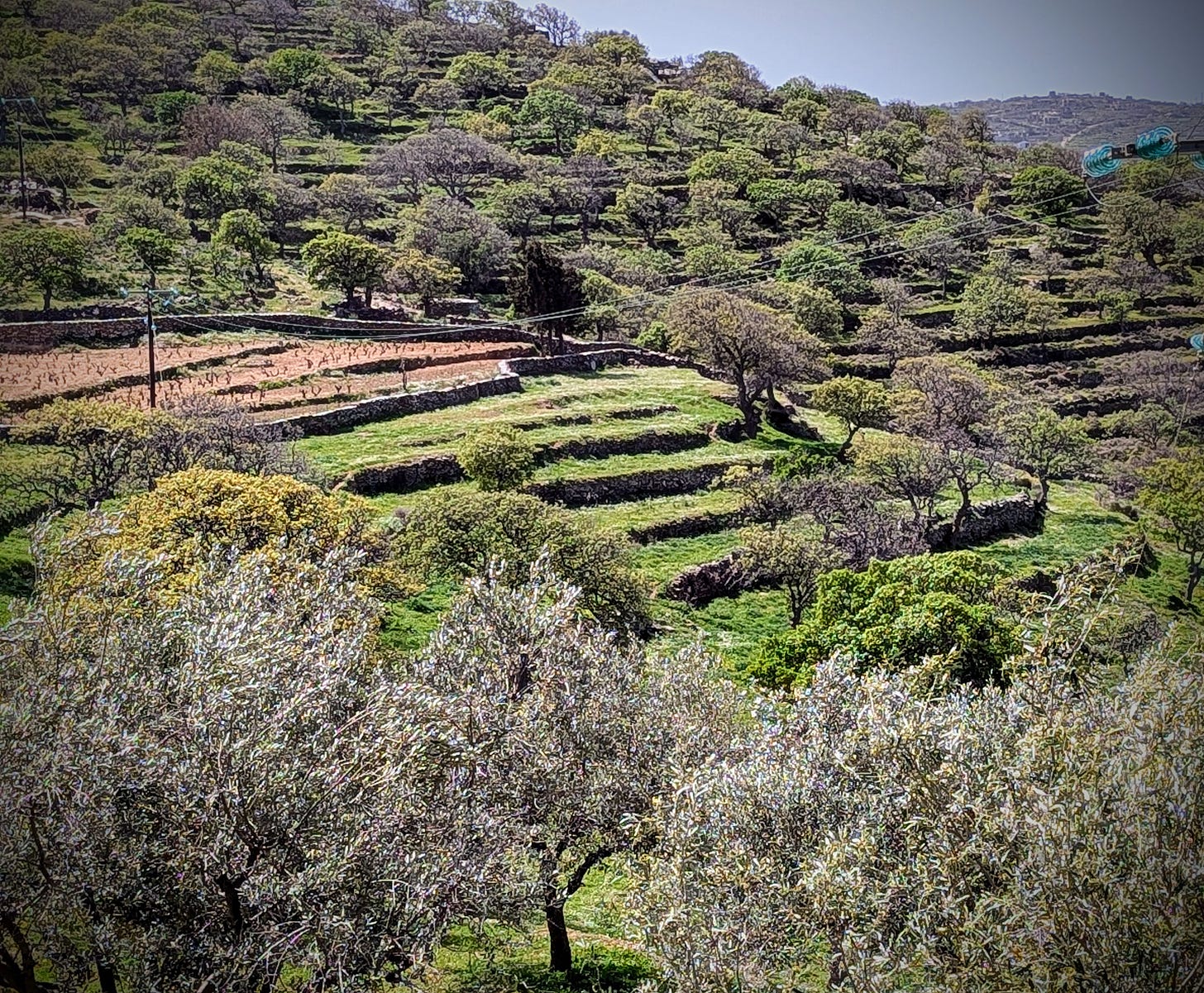
Like the Myoporum, these imported fashionable plants are hardy and resilient to drought. They also grow fast and new vacation homeowners want their gardens to materialize almost instantly.
And most of them are forgiving to clumsy pruning, making the lives of hired and tired gardeners a lot easier than some of the local hardy plants. And by local I mean plants that match the surrounding environment. It is not uncommon to see unusually green vacation home developments in the middle of a traditionally dry landscape: this to me is an unnatural sore in the eye.
The south Aegean is not meant to be green, especially in the summer. But new villa owners want everything to be green asap by mid-July at the latest “when we come with the kids for the summer…”
But there is nothing wrong with plants periodically drying in the heat, in fact it is a sign of health as they need their break to thrive again next winter. There are also plants that will remain green, if green is what we are looking for, plants that live well without water, my favorite being Pistacia lentiscus. It will not grow too fast at first, but if you water it a bit in the beginning, it will become an impressive huge shrub after a few years.
Of course, some native Mediterranean plants can also be incongruous within specific micro environments and local cultures. For example, the olive tree: in the last years everyone on Kéa is planting olive trees as there were only few old ones on the island. These need water to produce fruit and require regular biannual pruning.
Olive oil was never a traditional crop in the Cyclades, pork fat usually being the staple fat, extensively used in cooking, even though there were certainly a few olive trees for family use. Our property came with about fifty newly planted olive trees, which did not exactly thrive in our dry, rocky soil. We do not have enough water for them, and we can never get a good crop. One needs to own a well to be able to properly irrigate them, and we don’t. We pay dearly for the water we consume, so our olive grove is not highly productive.
The truth is that when we first came to Kéa we didn’t know much. We, too, planted a few fashionable plants at first, but then we slowly replaced them with local ones. We do have a few plants from areas other than Kea in our garden, but I want to believe they do not alter much the traditional landscape. Our garden is green in the winter and colorful in the spring, as we try to re-introduce and showcase local wildflowers, as the lupins, clematis, delphiniums. We also planted lots of hardy aromatic shrubs: marjoram, sage, rosemary, thyme, and savory –-Kéans’ favorite herb— as well as Damascene roses the old variety often called “Kéan” by the locals.
I do not claim we are entirely successful but our garden is definitely not a sore in the eye. Is it impressive in the summer? Certainly not, when the vacationers are here. But it is in synch with the local island landscape, I believe. Am I a snob? In my own way, yes, probably!
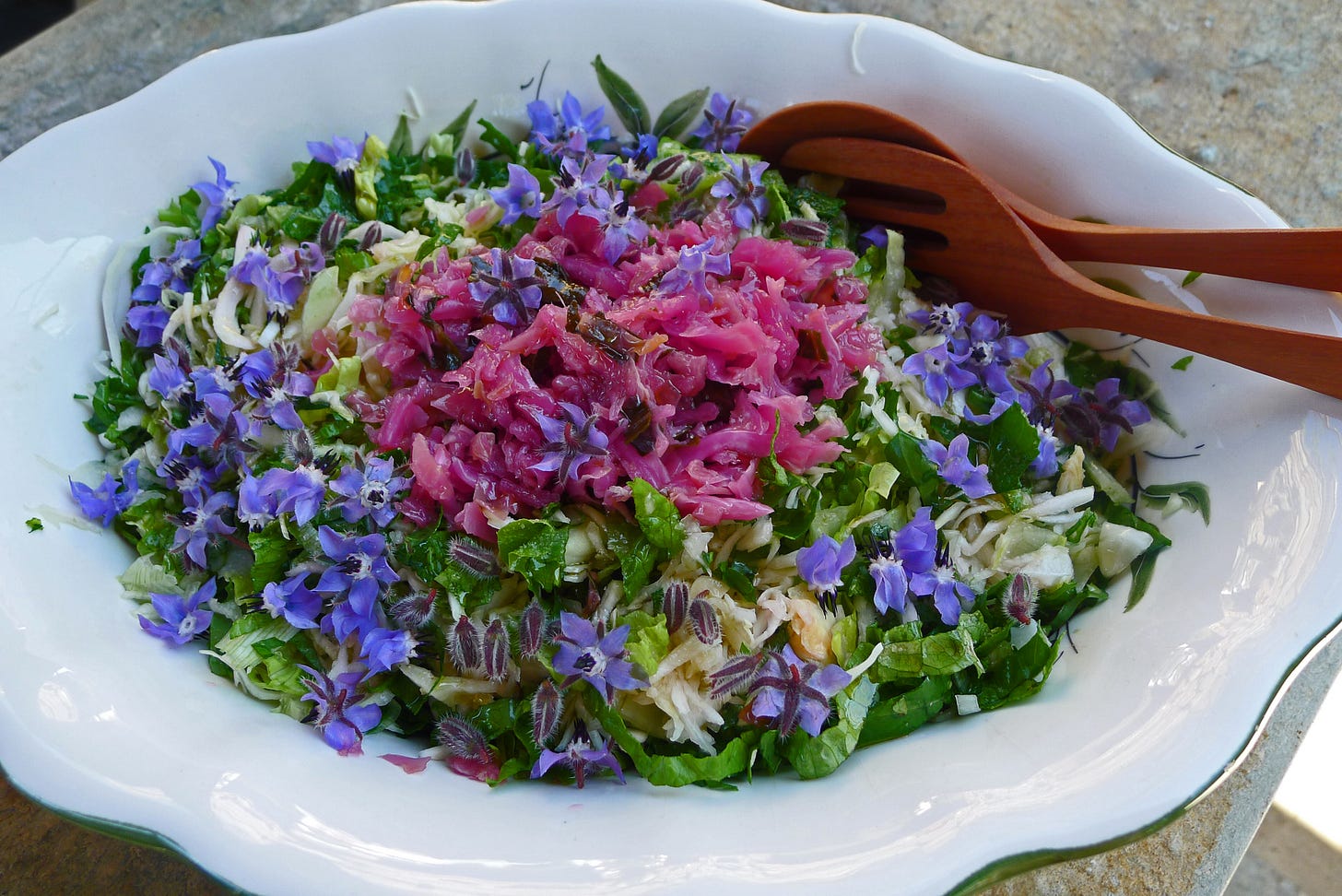
Flowers in my plate
In the spring version of our green winter salad, we often create “a multisensory food experience,” as Mind Body Green proposes. “When flavor, texture, appearance, fragrance, and beauty come together on your plate—the result is sheer culinary delight.”

Of the very common, slightly bitter dandelion blossoms —Taraxacum officinale — we read “the golden blossoms are nutritious edible flowers beloved by herbalists, gourmets, and culinary devotees alike. Their bioactive chemical compounds have been touted for diuretic, liver-supporting, and anti-inflammatory benefits, among others.’
The so-called ‘Greek Salad’ is not a default all-season dish. From the first October rains up until the end of April, I remember the greengrocers of Mytilini, the capital of Lesbos, selling each head of romaine lettuce tied together with two or three sprigs of borage (often with its little blue flowers), two or three scallions, several sprigs of peppery arugula, four or five sprigs of dill or fennel fronds, a few sprigs of peppery wild cress and either fresh mint or a little wild celery. Once home, these essential ingredients for the local green winter salad are thinly sliced and tossed with a simple vinaigrette. Embellished with some colorful flours this salad becomes irresistible!
Ubiquitous all over Greece and on Kea, the pale yellow mustard greens blossoms, add a delicious kick to the salad, while the pink rose geranium, and the purple rosemary blossoms and sprigs add extra fragrance to the crunchy greens and herbs.
It’s important to cut the greens at the last moment and to slice them very thin. If they are coarsely cut, the salad will taste different.
WORD of CAUTION: Not all flowers are edible; unless you are sure what exactly you are foraging, be careful because some flowers may be toxic!
Green, Winter Salad
Makes 4 servings
3–4 tablespoons extra-virgin olive oil
Keep reading with a 7-day free trial
Subscribe to Aglaia & Costas' Aegean Island Kitchen to keep reading this post and get 7 days of free access to the full post archives.

